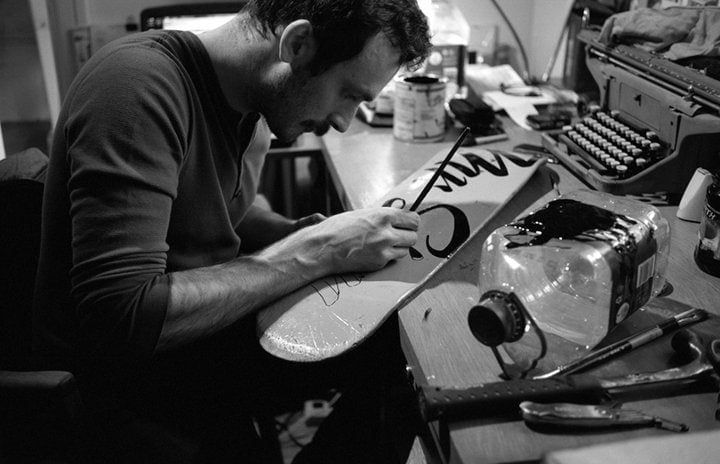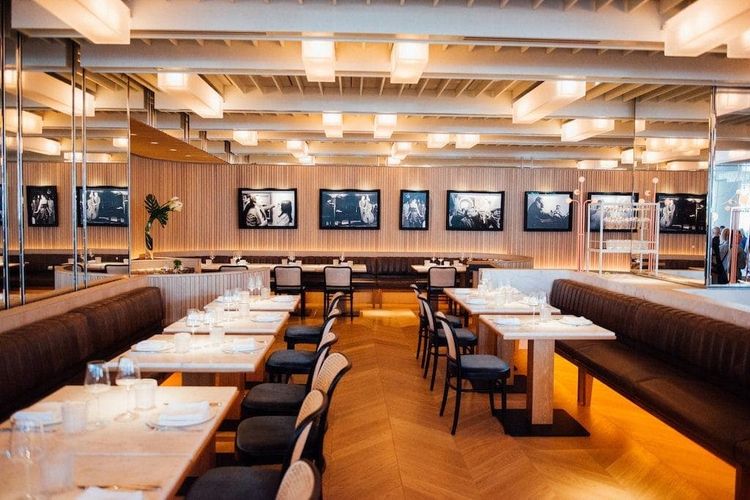Magnus Nilsson: 22 things to know about the chef

Former chef/owner of Fäviken, one of the 50 best restaurants in the world, Magnus Nilsson is 38 years old and has received two Michelin stars during his career. You may also have seen him on season 3 of Mind of a Chef, or season 1 of Chef’s Table (below). The young Swedish chef is a media star in the food world!
If Massimo Bottura seems passionate and exciting on television, Magnus Nilsson seems rather strict and intellectual. However, we had the opportunity to spend a day with the chef as part of his promotional tour for his book Nordic Cuisine. We were delighted to discover that, in addition to being rigorous and intellectual, Magnus Nilsson is also passionate, kind, humble, and constantly seeking improvement. Enjoy our encounter with this very inspiring and intelligent chef.
A few interesting tidbits to know about the chef:
- Magnus Nilsson has never watched his episode of Chef’s Table, nor has he watched his episode of Mind of a Chef! “I’ve never watched the other chefs’ either. I’ve tried, but I know them too well, and every time I found that it’s not really representative, so mine I’ll just never be able to watch.”
- His favourite food is rice pudding (!) “I just love it.”
- He originally wanted to be an engineer because he loves putting things together and understanding how they are made.
- At 16, he left the family nest to attend a ski and chef boarding school. “There, I mainly learned how happy you can make someone by cooking for them.”
- At 19, young Magnus began working for Pascal Barbot at the Michelin restaurant L’Astrance in Paris. “He told me his kitchen was too small for another cook, so he didn’t say ‘no’ to me. I came back every day for three weeks, I think he hired me mainly so I would stop bothering him.”
- His mentor, Pascal Barbot, never came to visit him in Fäviken. “I think it’s a French thing to not try their apprentices’ restaurants. Still, I think he’s proud of me…”
- Magnus Nilsson has wanted to give up cooking three times in his career. “Failure is an integral part of the long learning process that leads to success. You have to find satisfaction in doing what you do. I’ve often lost it and had to find it in other ways.”
- Creativity, he says, is the product of knowledge and experience. “That’s why you always have to be curious. Pacing is the key to create things. Thus, difficulties bring new possibilities. If you have access to everything, it blocks creativity.”
- He studied sommelier and thought he would pursue that with his life. “That was one of the things that opened my mind the most, studying wine. In cooking, we are not taught how to communicate what we want to achieve, the ability to talk about the senses, tastes, smells, etc. These studies have given me a vocabulary to describe all this.”
- Swedish wines suck, he says: “yeah they suck. But we have great beers and berries. I think you have to accept your strengths and weaknesses in life and move on.”
- He first agreed to work at Fäviken on a six-week wine list consulting contract. “At the time I often said that I would never open a restaurant there.” The six weeks became two months, then three months, then six months, then a year. Then another year. “I realized I liked the place after all.”
- Magnus Nilsson eventually became the chef at Fäviken because the team there never managed to bring a great chef to the “backwater” that is Järpen — “Järpen is about the size of Denmark, with one resident per kilometer. I could never find a good chef who was willing to travel that far for a 24-seat restaurant at the time. So I hired someone in the dining room and went back to cooking full time. It was purely out of necessity, because no one wanted to work there! But I’m happy I had to go back to the kitchen because I realized I really liked it.”
- Opportunities are very important according to the chef. “I have been very lucky, if you can call it that, to have ‘great opportunities’. However, I have also always known how to take them. Many people blame the success of some on coincidence and easy opportunities, but I have realized along the way that each person creates their own opportunities. Part of my success comes from the fact that I’ve been able to create something cool with every opportunity that’s come my way.”
- Magnus Nilsson is a man of many talents; in fact, he takes most of the photos (except for the food) for his books (including Nordic Cuisine) and website.
- His book Nordic Cuisine (for which he was visiting Montreal) is truly about Nordic cuisine, not about his own way of preparing Nordic cuisine. He finds the exercise of defining a kind of food very difficult, since “people cook what makes sense to them. I learned with this book that I didn’t actually know anything about Nordic food. It was a very rewarding experience.”
- One day, Magnus Nilsson and his partners doubled the price of the restaurant. They went from 150 euros to 300 euros per person. “I wanted a better quality of life for the people who work for me. I wanted my employees to work 40 hours a week, maximum 50 hours, have five weeks of vacation and we made 10% profit on everything (!!) We took a risk, and it worked out very well.”
- Many of the people on his team are Canadians “because Canada and Sweden have an agreement and Canadians can come and work easily for two years.”
- Magnus has grown from one employee (himself) to 67 employees and generates 6.5 million in sales.
- He opens Fäviken’s reservations twice a year, and in less than five minutes he sells out! To avoid “no-shows,” Magnus sells his restaurant seats like tickets to shows; the seats are prepaid and non-transferable.
- For him, the tasting menu can be the best experience in the world or it can be the worst. “You have to be extremely diligent and listen to your customer. You can’t tell people how they’re going to feel, you have to show them. In the restaurant, you start with seven very quick courses served every 40 seconds, so people know to pay attention; instinctively, people get it. The more cocktails people have early in the evening, the more relaxed the atmosphere. Then we send out a classic hit dish, then a comforting, easy-to-love dish to entice, then something more creative and provocative, then five quick little bites every 50 seconds, then an always-popular vegetable, then a meat, then a few bolder side dishes, then five little things every thirty seconds, then a charming dessert, and we finish our service with seven small things and two things to nibble on.” Whew.
- Magnus Nilsson is now 38, married with four children, and lives with them on a farm and has just acquired an orchard to concentrate on apple growing.
- “I think the greatest gift you can give someone is the pleasure of cooking, the pleasure of eating.” He says people should always cook for others. “Customers should always feel that what is being offered is for them. Too many chefs cook for themselves, but it doesn’t last. We have a restaurant for the consumers, not for ourselves. A lot of chefs open to compete, to cook for themselves, for recognition from papers or critics, that’s bad motivation. You have to create a restaurant that appeals to consumers. And then you have to observe, and continually readjust to please them; that’s the most interesting professional challenge.”
Thanks to Gallimard Montreal and Phaidon for this meeting.
To purchase his book on Nordic Cuisine, click here.
Written by Élise Tastet
Photography by Alison Slattery













